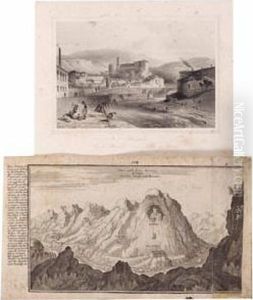Friedrich Wurthle Paintings
Friedrich Würthle, born in 1818, was an Austrian artist and photographer known for his contributions to early photography and his work in the Habsburg Empire during the 19th century. He initially trained as an artist before turning his attention to the burgeoning field of photography. Würthle's artistic background informed his photographic work, which was noted for its compositional quality and attention to detail.
As photography was still in its infancy during Würthle's lifetime, he was among the pioneers in the Austro-Hungarian region experimenting with the new medium. He set up his studio in Salzburg, where he produced portraits and landscapes. His studio became one of the most important in the region, and it was frequented by various figures of the Austro-Hungarian aristocracy, as well as by tourists who were drawn by the beauty of Salzburg and the surrounding areas.
Würthle's photography is particularly noted for its technical proficiency and the clarity of his images. He employed various processes throughout his career, adapting to the rapid changes in photographic technology of the time. His works served as important historical documents, capturing the likeness of individuals and the landscapes of an era that saw significant social and political change.
Friedrich Würthle's contributions to photography were not limited to his own practice. He was also instrumental in the dissemination of photographic knowledge, through both his studio and his role as a mentor to other photographers. His legacy is preserved in the collections of various museums and archives that hold examples of his work.
Würthle continued to work until his death in 1883. While perhaps not as widely known as some of his contemporaries, his work remains an important part of the history of photography, particularly in the context of the Austro-Hungarian Empire. His photographs offer invaluable insights into the visual culture and society of his time.

